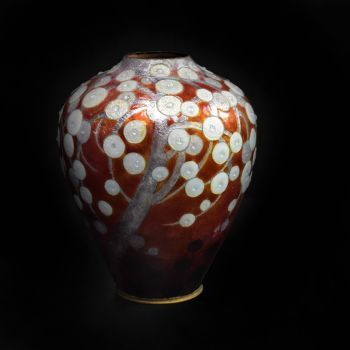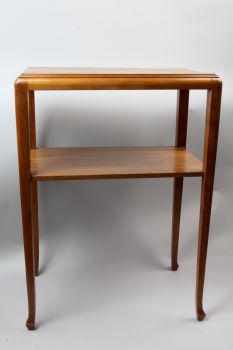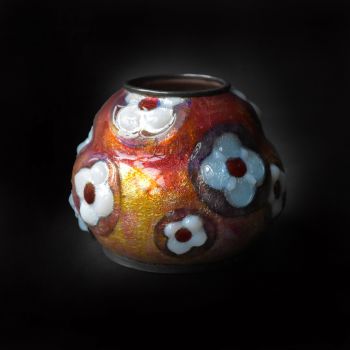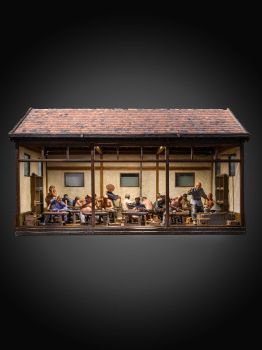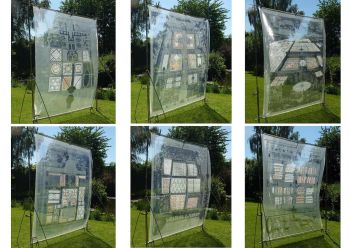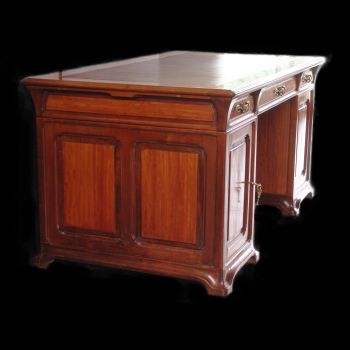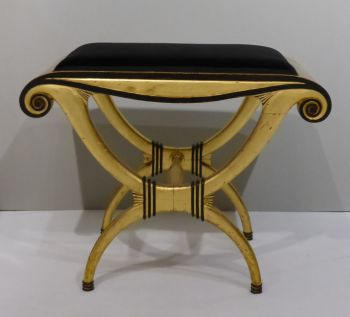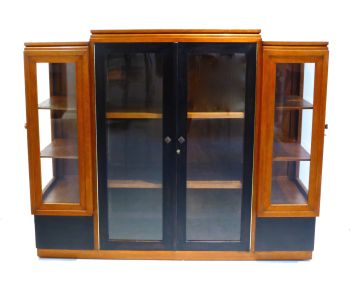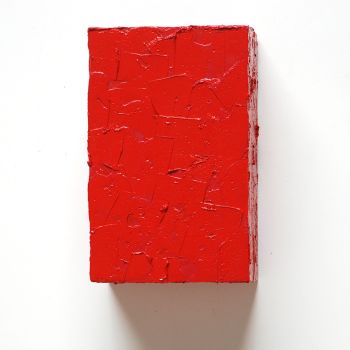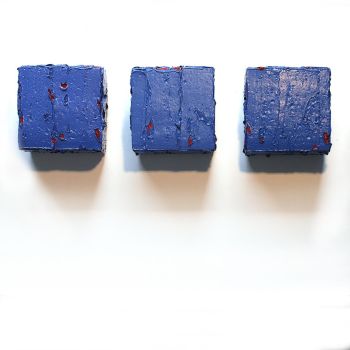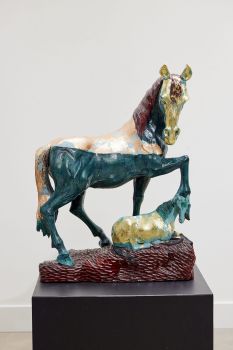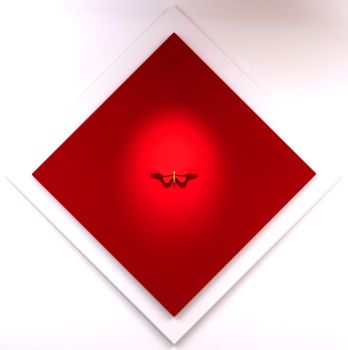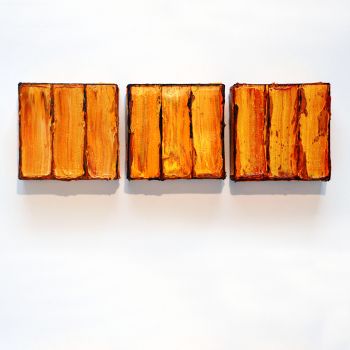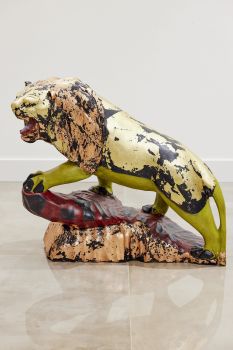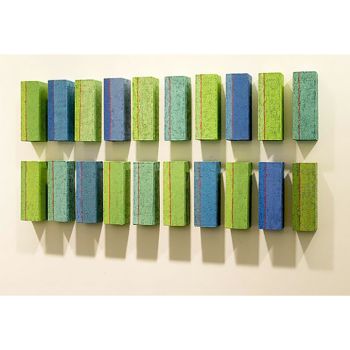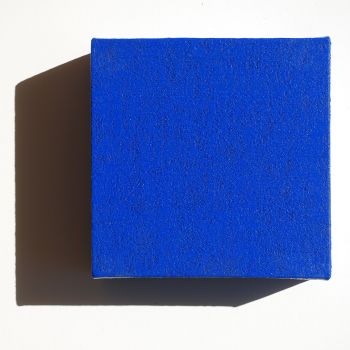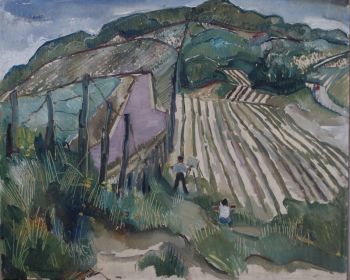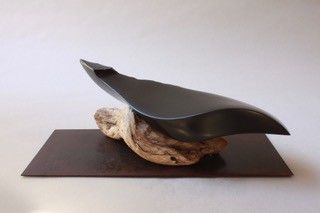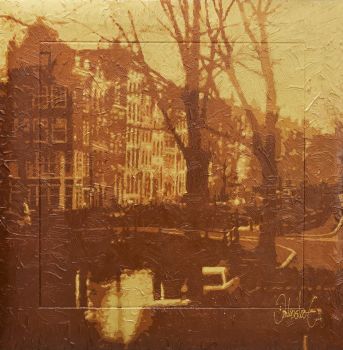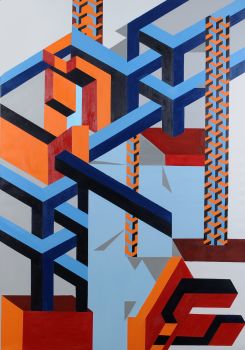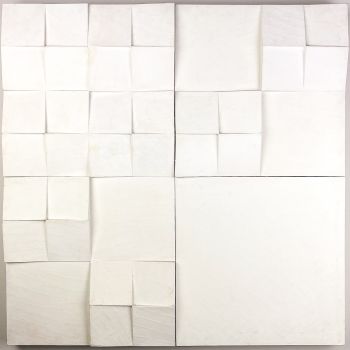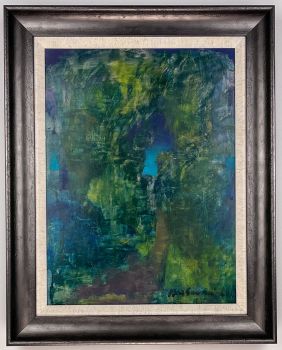A staved teakwood “Congo” icebucket – Dansk Designs, circa 1965 1960 - 1969
Jens Harald Quistgaard
WoodTeak
40 cm
ConditionVery good
€ 675
Van Kerkhoff Art
- About the artworkA staved teakwood “Congo” lidded icebucket with a black plastic inner liner. Designed by Jens Quistgaard in 1955 and produced for Dansk Designs probably in the late 1950’s or early 1960’s.
These icebuckets were made in three different size ranges, this being a middle sized example. These objects were made with great craftsmanship.
Strips of solid teakwood (staves) were joined together in a traditional way to form the final shape. The craftsmanship originates from the tubing of buckets and barrels and has been practised in Scandinavia since the middle ages.
The ice bucket is branded underneath the base: “four Ducks mark” – which identifies the bucket as an early production piece – Dansk Designs Denmark – JHQ (Jens Harald Quistgaard) and ©.
About Jens Harald Quistgaard
Jens Harald Quistgaard (Copenhagen 1919 – Vordingborg 2008) was a Danish wood-, metal- and glassware designer and sculptor, known principally for his work for the American company Dansk Designs, where he was chief designer from 1954 until 1983. Jens Harald Quistgaard grew up in an artistic family in Copenhagen. His father, Harald Quistgaard, tought him sculpting at a young age. He was educated as a drawer and silversmith at the technical school in Copenhagen. His apprenticeship he served at Georg Jensen Sølvsmidie.
After World War II Quistgaard set up his own design studio in Copenhagen. His breakthrough as an designer came in 1953–54, where he fashioned the cutlery set Fjord, the first cutlery set that combined stainless steel with handles of teak.
In 1954 was awarded the gold medal at the Triennale in Milan for a saucepan design. For two more reasons 1954 became a very important year for Quistgaard. He received the prestigious Lunning Price – informally called the “Nobel price for design” – and he started to work together with the American businessman Ted Nierenberg.
Together they founded the American company Dansk Designs with Quistgaard as chief designer. His designs were an immediate success in the USA and his designs were synonymous with modern living and Scandinavian style, consisting of clean lines, sculptural form and natural materials.
From the 1960’s onward his success in The united States was followed by success in Europe and Japan. Dansk Designs started their own shop in Copenhagen, in London and in Stockholm, and Quistgaard’s designs were exhibited and sold in Tokyo, Berlin, Paris, Zürich, Melbourne, Johannesburg and many other major cities.
Quistgaard remained chief designer for Dansk Designs until the 1980’s. In 1983 he moved to Rome and in 1993 he returned to Denmark.
His work is represented in many museums all over the world, among others: The Louvre, Paris; Designmuseum Danmark, Copenhagen; The British Museum, London; The MoMa, New York City and the National Museum, Stockholm.
Marked
Branded underneath the base:
"Four Ducks" Mark – Dansk Designs Denmark – JHQ (Jens Harald Quistgaard) and ©
Execution
made for Dansk Designs in Denmark, circa 1965
Condition
Good original condition, some minor scratches, stains and dents. Wear consistent of age and use.
Literature
Mel Byars – The Design Encyclopedia, p. 605-606
Dimensions
Height 40 cm - About the artist
Jens Harald Quistgaard (April 23, 1919 - January 4, 2008) was a Danish designer best known for his creations for Dansk, where he worked as chief designer from the mid-1950s to the 1980s. During his career, Quistgaard designed more than 4000 objects, making an important contribution to modern design.
Born in Copenhagen on April 23, 1919, Quistgaard grew up in an artsy family, where his father, Harald Quistgaard (1887-1979), was a sculptor and his mother a painter. At the age of fourteen, Jens Harald Quistgaard started experimenting with making jewelery and knives. After his education at the technical school, he apprenticed with renowned craftsmen such as Georg Jensen and Just Anderson.
During World War II Quistgaard was active in the Danish resistance. After the war, his designs were exhibited at various exhibitions in Europe and the United States.
A turning point in his career came with the creation of the cutlery set "Fjord" in 1953, in which Quistgaard combined teak wood with stainless steel. The design caught the attention of American entrepreneur Ted Nierenberg, who approached Quistgaard with a proposal to produce the cutlery set on a large scale. This is how Dansk International Designs was born in 1954, with Quistgaard appointed as chief designer. The Fjord cutlery set was introduced in American stores in 1956 and quickly became a great success.
In addition to cutlery, Quistgaard also designed an extensive collection of pepper mills, salad bowls and cutting boards for Dansk. He was known for his use of wood in his designs, especially teak wood, but also more exotic woods such as wenge, cocobolo and rosewood.
Quistgaard received several prestigious awards for his innovative designs, including gold and silver medals at the 1954 Milan Triennale and the Lunning Prize. In 1958 he was awarded the Neimann Marcus Prize. Quistgaard continued to work at Dansk until the 1980s, where he continuously created innovative and timeless designs.
Jens Harald Quistgaard's legacy lives on in the world of design, where his timeless and functional creations are still appreciated by enthusiasts all over the world. His influence on the Danish and international design community will be remembered forever.
Are you interested in buying this artwork?
Artwork details
Related artworks
- 1 - 4 / 24
Unknown artist
The Stamford Raffles Secretaires.1800 - 1813
Price on requestZebregs & Röell - Fine Art - Antiques
 Curated by
Curated byDanny Bree
Unknown artist
AN IVORY NETSUKE OF A DUTCHMAN FROLICKING WITH A SMALL BOY18th century
Price on requestZebregs & Röell - Fine Art - Antiques
Unknown artist
A RARE LARGE JAPANESE LACQUERED LEATHER TELESCOPE1750 - 1800
Price on requestZebregs & Röell - Fine Art - Antiques
1 - 4 / 24Unknown artist
A JAPANESE MODEL OF A NORIMONO, A PALANQUIN1650 - 1700
Price on requestZebregs & Röell - Fine Art - Antiques
Unknown artist
Russian icon depicting an extended Deesis1600 - 1650
Price on requestKunsthandel H.W.C. Dullaert Icons
Rene Rietmeyer
"BUDAPEST, HUNGARY, MARCH 2005"2005
Price on requestEuropean Cultural Centre Collection
Unknown artist
A RARE COMPLETE INDIAN SADELI INLAID WORK AND WRITING BOX1800 - 1850
Price on requestZebregs & Röell - Fine Art - Antiques
1 - 4 / 24- 1 - 4 / 12































